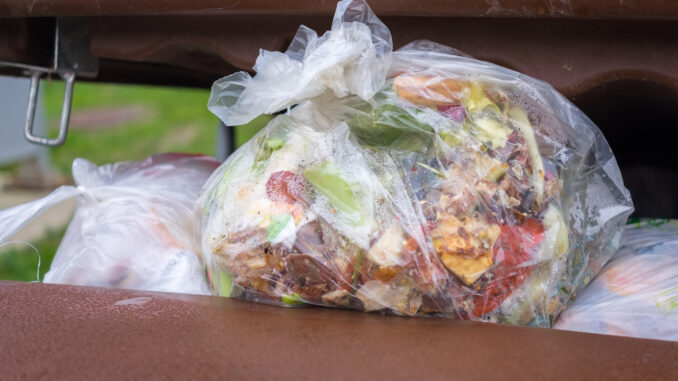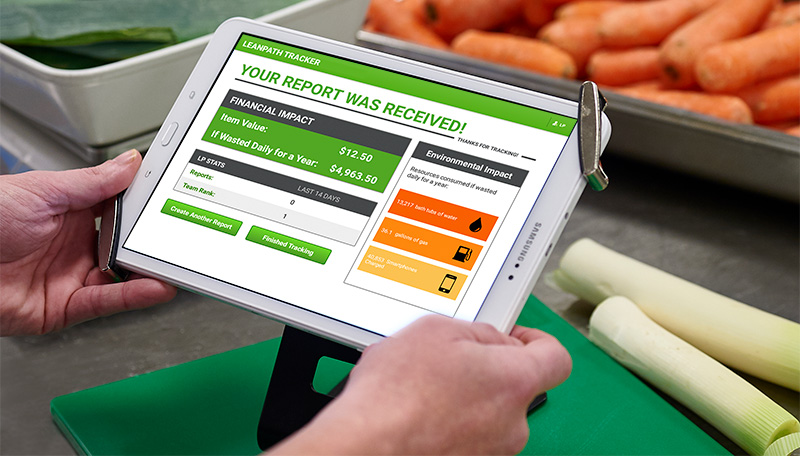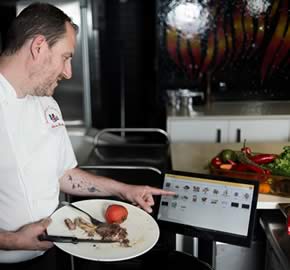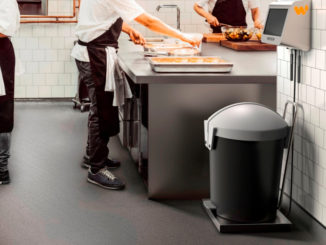
By Matthew S. Hollis, Co-founder and President, Elytus - 5.17.2020
Food waste is a concerning, albeit familiar, issue in the restaurant industry. An estimated one-third of all food is lost across various industries, equating to nearly $100 billion in value every year. Similarly, 70 percent of food loss occurs without ever ending up in front of a customer. In the restaurant industry specifically, food costs account for one of the largest Costs of Goods Sold (COGS) next to labor. As restaurants look to reduce expenses and increase profitability, it only makes sense that food costs and associated food waste is a potential area of opportunity.
What exactly is food waste? The simple answer is that any food whether ingredients, prepared or spoiled that was paid for and is thrown away constitutes food waste. When reviewing a restaurant’s operation, you have two areas of food waste generation. The front of house and back of house operations. Your front of the house staff are in charge of communicating with customers and, in turn, communicating with kitchen and bar staff. If a breakdown in communication occurs, food can go to waste due to improper preparation from presenting something the customer did not order. On average, 17 percent of your guest’s meal stays on their plate, which is another area of food waste generation sometimes linked to portion sizes.
Typically, more food waste is generated in the back of house of a restaurant rather than front of house. This is good news for restaurant operators as the very essence of the restaurant business is food production giving you more control over this area. The back of the house staff are in charge of ingredients from ordering, dating, and inventory to spoilage. In addition, over-cooking, under-cooking and scraps as a byproduct of meal preparation all happen in the back of house.

Even the industry’s best operators have the opportunity to review their operations to reduce food costs and food waste in light of recent events. With bans placed on in-person dining, limited occupancy levels, increased delivery/carryout orders and stressed supply chains, the challenge to reduce expense and food waste can be daunting.
So what exactly can your business do to curb food waste generated onsite? Often, restaurant owners do not have an accurate breakdown of what they have stored inside of their walk-in refrigerators, cellars, or freezers, which could lead to missed sell-by dates. Implementing an inventory management system can keep track of all ingredients ordered and kept within the restaurant. The data collected allows restaurant owners to analyze popular menu dishes and decide which ingredients to buy in bulk for savings, as well as which items are not being fully utilized and, therefore, going to food waste.
Related: Restaurant Technology News Announces the Winners of Its Choice Awards for Environmental Good
A key to being able to change behavior related to food waste is being able to manage, monitor and track data related to the waste being generated. Services like Leanpath and Winnow, food waste tracking systems, allow you to see the amount of food discarded in your restaurant’s kitchen. This data can help educate your staff in real-time about possible areas of opportunity. In both systems, photos of wasted food are captured as it’s being thrown away.

Additionally, the systems use a digital scale and corresponding software to calculate the weight of the food waste each time anything is thrown away. The weight is recorded, the user selects the reason for the waste and records the data. Reports can then be generated to identify potential trends and areas for cost reduction.
Another solution could be Wise Up on Waste which is a mobile application that allows users to track food waste to highlight the average volume of each type of waste (spoilage, preparation, or customer plate waste) generated per ‘day part’ (breakfast, lunch, and dinner). Compatible with iOS and Android devices, as well as free from the Apple Store and Google Play, Wise Up on Waste is a viable and cost-effective solution to restaurants needing an answer to their food waste problem, but not necessarily in a place to spend a lot of money.
While prevention is the single best weapon against food waste yielding the best overall cost reduction and impact on the bottom line, it is unrealistic to expect that you will eliminate food waste completely. When food waste does occur, the first step should be to attempt to donate the food to local food shelters. Liability is waived under the Good Samaritan law and typically restaurants can benefit from tax savings and reduced disposal costs. If the food is inedible and thus must be discarded, alternative options such as animal feed and composting may provide a more cost-effective disposal method vs. the traditional landfill.
While bandwidth to tackle this type of program may be hard to come by the payback can be significant. A reduction of even five to ten percent of your overall food costs could provide your restaurant with a nice boost to profitability. This in turn ensures that your establishment is there to provide hospitality for your guests for years to come. Of course the planet wouldn’t mind a little less waste along the way either.
 Matthew S. Hollis is the co-founder and President of Elytus, a third-party administrator that helps clients streamline waste and recycling operations while becoming more sustainable in the process. As apart of its #WasteNothing motto, Elytus believes in saving time, money and the environment. Matthew is a thought leader in the food waste + waste reduction space, with bylines and interviews in Inc, Waste Dive, Facility Management Journal, Recycling Today, Total Food Service Mag, Modern Restaurant Management, Waste Advantage and Environmental Leader.
Matthew S. Hollis is the co-founder and President of Elytus, a third-party administrator that helps clients streamline waste and recycling operations while becoming more sustainable in the process. As apart of its #WasteNothing motto, Elytus believes in saving time, money and the environment. Matthew is a thought leader in the food waste + waste reduction space, with bylines and interviews in Inc, Waste Dive, Facility Management Journal, Recycling Today, Total Food Service Mag, Modern Restaurant Management, Waste Advantage and Environmental Leader.
Are you an industry thought leader with a point of view on restaurant technology that you would like to share with our readers? If so, we invite you to review our editorial guidelines and submit your article for publishing consideration.


